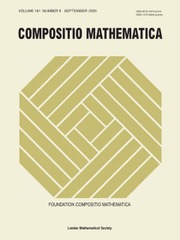Article contents
Drinfeld centers and Morita equivalence classes of fusion 2-categories
Published online by Cambridge University Press: 17 June 2025
Abstract
We prove that the Drinfeld center of a fusion 2-category is invariant under Morita equivalence. We go on to show that the concept of Morita equivalence between connected fusion 2-categories corresponds to a notion of Witt equivalence between braided fusion 1-categories. A strongly fusion 2-category is a fusion 2-category whose braided fusion 1-category of endomorphisms of the monoidal unit is  $\mathbf{Vect}$ or
$\mathbf{Vect}$ or  $\mathbf{SVect}$. We prove that every fusion 2-category is Morita equivalent to the 2-Deligne tensor product of a strongly fusion 2-category and an invertible fusion 2-category. We proceed to show that every fusion 2-category is Morita equivalent to a connected fusion 2-category. As a consequence, we find that every rigid algebra in a fusion 2-category is separable. This implies in particular that every fusion 2-category is separable. Conjecturally, separability ensures that a fusion 2-category is 4-dualizable. We define the dimension of a fusion 2-category, and prove that it is always non-zero. Finally, we show that the Drinfeld center of any fusion 2-category is a finite semisimple 2-category.
$\mathbf{SVect}$. We prove that every fusion 2-category is Morita equivalent to the 2-Deligne tensor product of a strongly fusion 2-category and an invertible fusion 2-category. We proceed to show that every fusion 2-category is Morita equivalent to a connected fusion 2-category. As a consequence, we find that every rigid algebra in a fusion 2-category is separable. This implies in particular that every fusion 2-category is separable. Conjecturally, separability ensures that a fusion 2-category is 4-dualizable. We define the dimension of a fusion 2-category, and prove that it is always non-zero. Finally, we show that the Drinfeld center of any fusion 2-category is a finite semisimple 2-category.
MSC classification
Information
- Type
- Research Article
- Information
- Copyright
- © The Author(s), 2025. The publishing rights in this article are licensed to Foundation Compositio Mathematica under an exclusive licence
References
- 1
- Cited by


